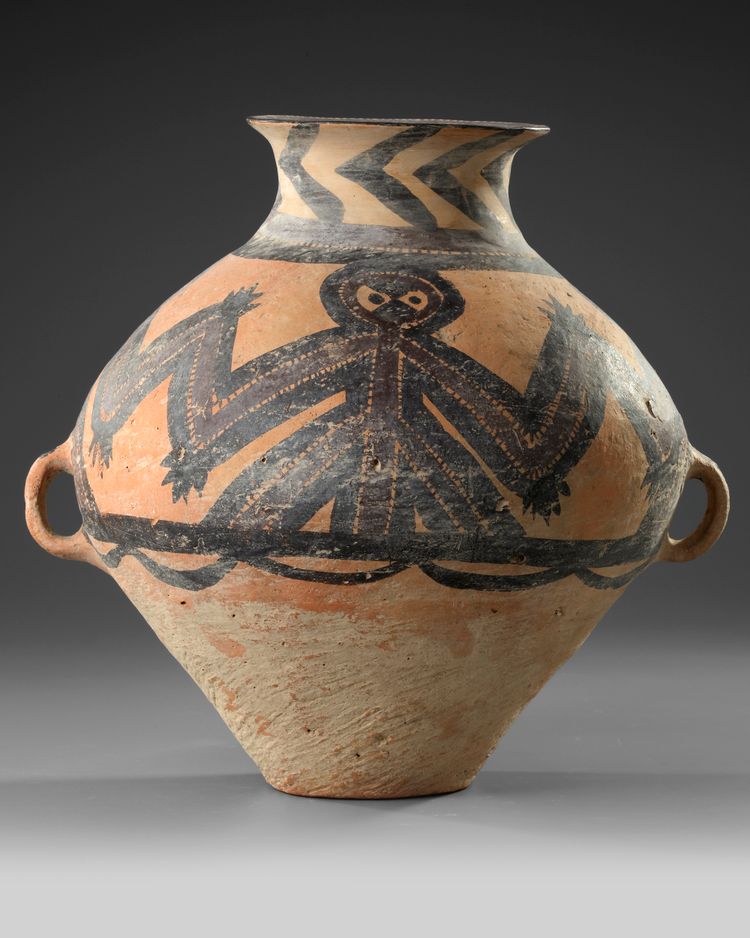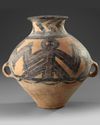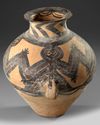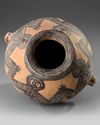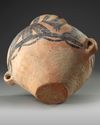A CHINESE NEOLITHIC POTTERY VASE, MACHANG PHASE, CIRCA 2350-2050 BC
An ancient Chinese Neolitic earthenware two-handled jar, dating to the the Machang phase of the Majiayao (or Gansu Yangshao) culture.
The vessel is of typical form, consisting of a bulbous body, flaring neck and two strap-handles. In brown and dark brown pigment.
Decorative motifs on Machang-period wares are largely geometric and include curvilinear patterns and cross-hatching, and lozenges, triangles, circles, and squares in an endless array of combinations.
The zoomorphic figure in the center of this jar is one of the more distinctive images in the Machang phase. These enigmatic motifs are variously interpreted: they are sometimes explained as abstract representations of natural creatures such as frogs; other hypotheses suggest that they are symbolic of either the costume worn by a shaman or the transformation he undergoes during rituals.
Height: 33 cm.
